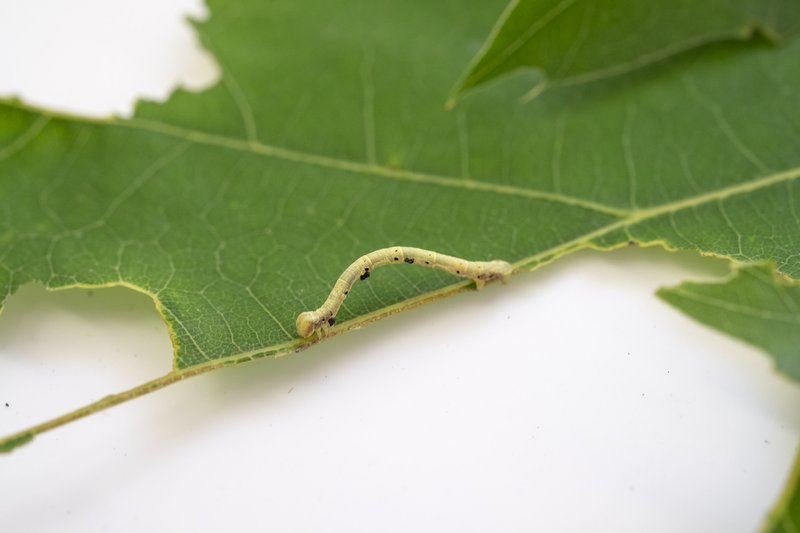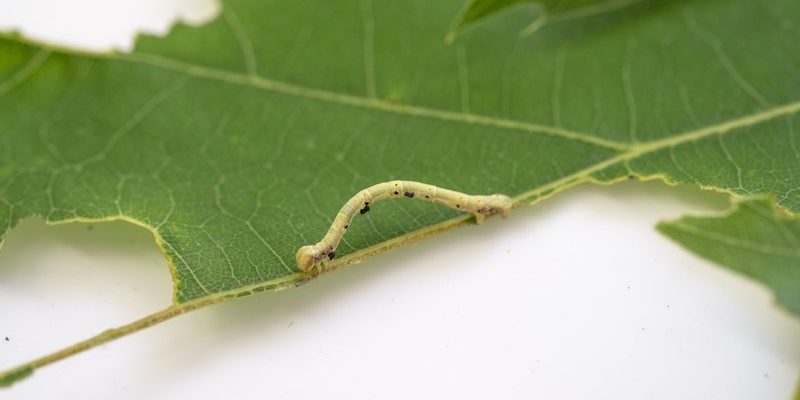
So, which trees are most vulnerable to inchworm damage? That’s a question worth exploring, especially if you have a garden or landscape filled with various tree species. In this article, we’ll look at the types of trees that often find themselves in the crosshairs of inchworm activity, why they are susceptible, and, most importantly, how to protect them. Let’s dig in!
Understanding Inchworms and Their Impact
Inchworms, which are actually the larvae of geometer moths, are notorious for their unique movement. They “inch” along by contracting their bodies, making them look a bit like measuring tape, hence the name. While their iridescent bodies can be mesmerizing, their appetite for leaves is anything but delightful.
When inchworms infest a tree, they typically munch on the leaves, leaving behind a trail of defoliation. This can weaken the tree, making it more susceptible to diseases and other pests. If you’re scratching your head wondering how this all happens, here’s the thing: inchworms often appear in large numbers, particularly during certain times of the year, making their presence felt more profoundly than you might imagine.
Identifying Vulnerable Tree Species
Not all trees are created equal when it comes to inchworm resistance. Some species are like candy to these little pests, while others might be a bit more resilient. Let’s take a look at some of the tree species that are particularly vulnerable to inchworm damage:
1. Maple Trees
Maples are beloved for their stunning fall colors and shade-providing canopies. Unfortunately, they are also a favorite feast for many inchworm species. The leaves of maples are tender and nutritious, making them prime targets for these pests. If you notice your *Acer* (maple) trees losing their leaves, especially in late spring or early summer, inchworms might be the culprits.
2. Oak Trees
Oak trees are sturdy giants in many landscapes, but they can fall victim to various inchworm species as well. The leaves of oaks often attract **Lymantria dispar** (the gypsy moth), leading to extensive leaf loss. If you observe the leaves turning brown and hanging limp, it could be time to check for these sneaky munchers.
3. Fruit Trees
Fruit trees, like apple and cherry, can also be easy targets for inchworms. These trees produce lush foliage, which can be incredibly appealing during the growing season. If you’ve planted a few fruit trees for a summer snack, keep an eye out for signs of damage, like missing or shredded leaves.
4. Birch Trees
Birch trees, with their striking white bark and delicate leaves, are attractive but can be quite vulnerable to inchworm infestations. These trees are often preferred nurseries for various types of inchworms. If you have birches in your yard, be vigilant as they can quickly go from rich green to bare branches.
Why Some Trees Are More Vulnerable
Now that we’ve identified a few tree species at risk, you might wonder why some trees attract inchworms more than others. Several factors come into play here.
First, the **leaf structure** is crucial. Trees with softer, tender leaves are more appealing to inchworms than those with tougher, thicker foliage. For instance, maples and birches have more palatable leaves compared to the leathery leaves of holly or pine.
Additionally, environmental conditions like moisture levels and sunlight can influence vulnerability. Trees stressed by drought or poor soil conditions are often weaker and may attract more pests. If you want your trees to thrive, ensuring they’re well-watered and fed can help keep those pesky inchworms at bay.
How to Protect Trees from Inchworm Damage
So, what can you do to shield your cherished trees from the onslaught of inchworm damage? Here are some practical steps:
1. Regular Inspections
A good practice is to routinely inspect your trees, especially during the warmer months. Look for signs of leaf damage or actual inchworms hanging out in the branches. Catching them early can make a big difference.
2. Natural Predators
Encouraging natural predators can be an effective way to control inchworm populations. Birds, such as chickadees and blue jays, love to snack on these pests. Planting bird-friendly trees and shrubs can help attract these helpful allies to your garden.
3. Insecticidal Soap
If you notice a significant infestation, consider using insecticidal soaps or neem oil to target the inchworms. These options are less harmful than harsh chemical pesticides and can help you manage the problem sustainably.
4. Healthy Growing Conditions
Lastly, maintaining healthy growing conditions is key. Make sure your trees are well-watered and fertilized, as stressed trees are more likely to fall victim to pests. When trees are healthy, they can bounce back quicker from any damage.
Recognizing the Signs of Infestation
Dealing with inchworms is all about recognizing the signs early. Here’s what to look for:
- Defoliation: Missing leaves are often the first sign.
- Bare branches: If you see branches stripped of leaves, inchworms might be at work.
- Cocoon remnants: Look for silk threads or cocoons in the trees.
If you notice any of these signs, it’s time to act!
Understanding which trees are most vulnerable to inchworm damage is crucial for any tree lover. By keeping an eye on beloved species like maples, oaks, fruit trees, and birches, you can take proactive steps to protect them. Regular inspections, promoting natural predators, and maintaining healthy conditions will go a long way in preventing these pests from causing havoc in your garden. With a little vigilance and care, your trees can thrive, remain healthy, and continue to grace your landscape for years to come!

